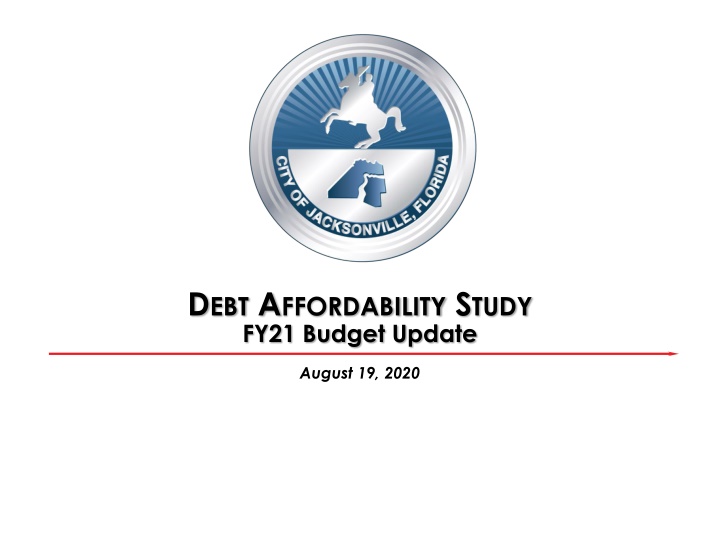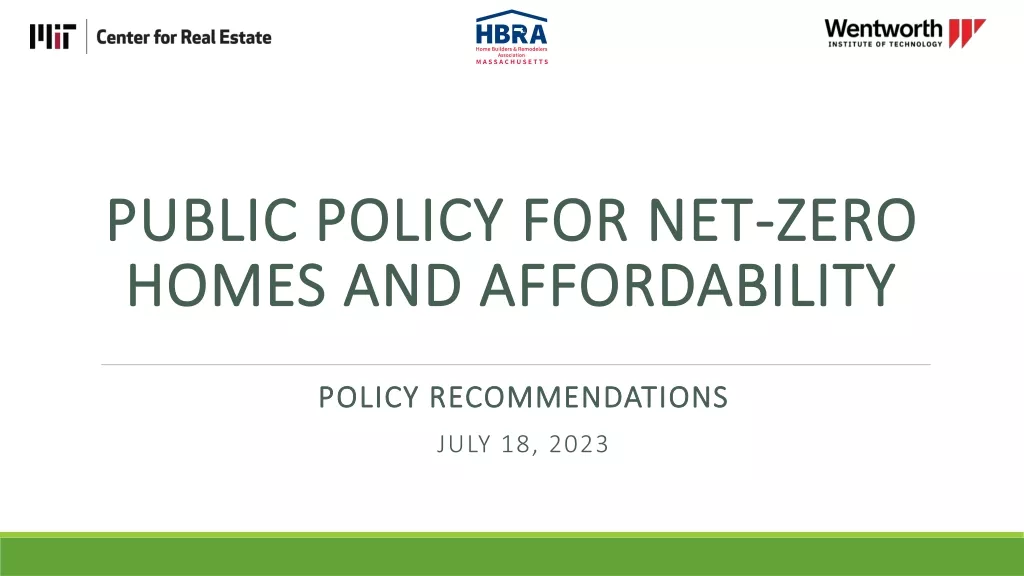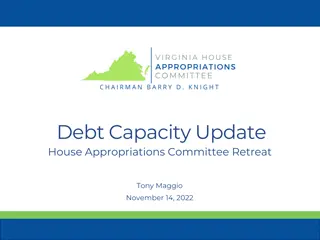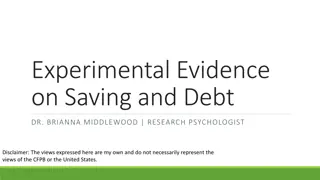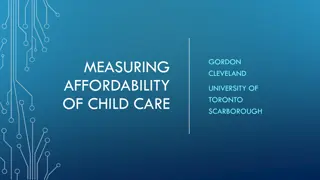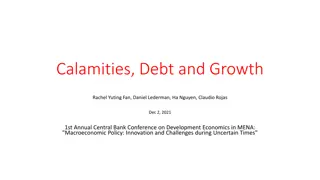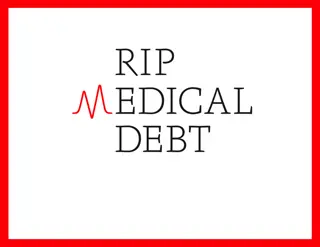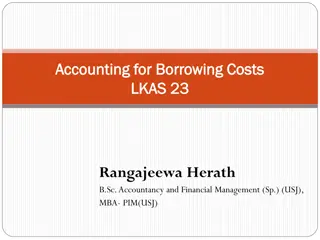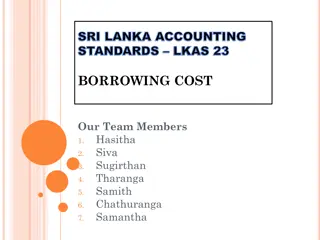Debt Affordability Study - Understanding Borrowing Impact and Decision-Making
Tool to analyze borrowing impact over time, set ratios for debt management, and forecast future borrowing needs based on financial capacity. Learn about debt ratios, credit ratings, and the importance of financial stability in debt management decisions.
Download Presentation

Please find below an Image/Link to download the presentation.
The content on the website is provided AS IS for your information and personal use only. It may not be sold, licensed, or shared on other websites without obtaining consent from the author.If you encounter any issues during the download, it is possible that the publisher has removed the file from their server.
You are allowed to download the files provided on this website for personal or commercial use, subject to the condition that they are used lawfully. All files are the property of their respective owners.
The content on the website is provided AS IS for your information and personal use only. It may not be sold, licensed, or shared on other websites without obtaining consent from the author.
E N D
Presentation Transcript
DEBT AFFORDABILITY STUDY FY21 Budget Update August 19, 2020
What is the Debt Affordability Study? The Debt Affordability Study is a tool to help explain the relative impact of borrowing over time and help guide decision-making Concept of affordability vs. capacity Established ratios that help guide the way we manage debt Budget Update report forecasts ratios into the future - Includes borrowings proposed by the Mayor s budget and borrowing assumptions for future years How much we program to borrow depends on our ability and willingness to make the required debt service payments 2
Overview of this Years Study All debt ratios remain well above minimum targets and significantly below maximums due to: - Fiscally responsible budgets over several years - Continued strong operating performance - Robust local economy and tax revenue - Growing value of tax rolls - Continuing to pay down debt - Refinancing of higher cost debt during a historically low interest rate environment 3
Debt Affordability Ratios - Snapshot Measure FYE20 Target Maximum Minimum Direction Overall Net Debt as % of Full Market Value 2.5% 3.5% N/A Lower is better 1.98% GSD Debt Service as % of GSD Revenues 11.5% 13.0% N/A Lower is better 8.04% Unassigned GF Balance as % of GSD Revenues (incl. Emergency Reserves)1 Unassigned GF Balance as % of GSD Revenues (excl. Emergency Reserves)1 14.0% N/A 10.0% Higher is better 20.03% 10.0% N/A 5.0% Higher is better 14.97% Ten Year Principal Paydown All City Debt 50.0% N/A 30.0% Higher is better 67.82% Ten Year Principal Paydown GSD Debt 50.0% N/A 30.0% Higher is better 56.81% Debt Per Capita $2,600 $3,150 N/A Lower is better $2,247 1Since reserve balances will not be known until FY End, the FY19 values are provided for these measures The City s debt ratios matter, but do not guarantee a strong credit rating 4
Ratings What are They? Credit ratings are assigned to assist investors and the markets in evaluating the riskiness of various fixed income securities, such as bonds The three most prevalent ratings agencies in the US are Standard and Poor s (S&P), Fitch, and Moody s Generally, a higher the credit rating lowers the borrowing cost to the issuer due to the perceived lower risk A ratings downgrade does not necessarily mean that the issuer has defaulted on its obligations, but that the agency believes that the risk of default has increased Ratings of AAA (or Aaa for Moody s) are the highest, with anything below BBB/Baa2 considered non-investment grade 5
Rating Agency Comments S&P/Fitch recently affirmed Jacksonville s credit ratings with Moody s placing the City on review for upgrade: AA/AA/A2 (General Obligation) AA/AA-/A3 (Special Revenue Pledge) We have done a good job of lowering our debt burden and increasing reserves Higher reserves and strong liquidity help offset the impact of debt and pension costs liabilities The City s strong management, pattern of good financial policies, diverse economy, low reliance on tourism, and stable growth were identified as credit positives The agencies continue to monitor impacts to the City s finances as a result of the ongoing COVID-19 pandemic, as well its as progress in forging a comprehensive resiliency plan 6
Unassigned GF/GSD Balance as % of Revenues Including Emergency Reserves Higher is Better 7
Millage Rate Comparison 2019-2020 Millage Rate Comparison of Ten Largest Cities in Florida Population per Square Mile 1,683 1,953 13,675 4,366 3,443 1,154 2,850 11,150 1,758 5,356 City Square Mileage 114.0 100.2 35.9 61.7 113.4 841.0 102.4 21.5 105.7 34.8 Combined Millage Rate 12.7445 12.4144 12.2334 12.0305 11.9385 11.4419 11.0847 10.9687 10.5409 9.6071 Square Miles Per Mil 8.95 8.07 2.93 5.13 9.50 73.50 9.24 1.96 10.03 3.62 City Population 191,903 195,713 490,947 269,357 390,473 970,672 291,800 239,722 185,837 186,220 Port St. Lucie Tallahassee Miami St. Petersburg Tampa Jacksonville Orlando Hialeah Cape Coral Fort Lauderdale (5) (3) (1) (4) (2) Note: Municipal and countywide millage rates exclude school district rates for this comparison. Source: Millage rates obtained from Florida Property Tax Data Portal. Population estimate obtained from UF Bureau of Economic and Business Research Land area estimates obtained from USA.com 8
Projected Debt Outstanding Projected Debt Outstanding at 9/30/20 Outstanding (In Thousands) Debt Type Better Jacksonville Program Debt: Better Jacksonville Sales Tax $ 408,175 Better Jacksonville Transportation 402,790 Special Revenue Bonds 227,640 State Infrastructure Bank Loan Program 12,870 Total Better Jacksonville Program Debt $ 1,051,475 General Government & Enterprise Fund Debt: Excise Tax Revenue Bonds Special Revenue Bonds1 $ - 935,320 Local Government Half-cent Sales Tax - Capital Improvement Revenue Bonds 81,890 Capital Projects Revenue Bonds - Short Term Debt (Commercial Paper & Line of Credit) 81,900 Total General Government & Enterprise Fund Debt $ 1,099,110 Total Projected Debt Outstanding $ 2,150,585 1The Special Revenue bonds contain assumptions related to expected borrowing prior to the end of FY20 9
Continued Debt Paydown Retirement of Existing Debt General Debt BJP Debt Total Debt Fiscal Year 2020 71,795 58,226 130,021 2021 80,190 62,742 142,932 2022 75,200 63,488 138,688 2023 75,375 69,479 144,854 2024 80,515 75,430 155,945 2025 $ 90,440 473,515 $ 73,320 402,685 $ 163,760 876,200 FY20 amounts are actuals. FY21-25 include assumed borrowing for already authorized projects. 10
Projected Debt Outstanding Includes Forecasted Borrowing for FY21 Authorization & FY22-25 CIP Plan 11
Impact of Additional Borrowing While ratios may not be violated, keep in mind that each additional $10 million of borrowing equals about $800,000 in annual debt service as a rule of thumb 12
Impact of Changes to FY21 Authorization Ratios are projected to stay better than Target 13
